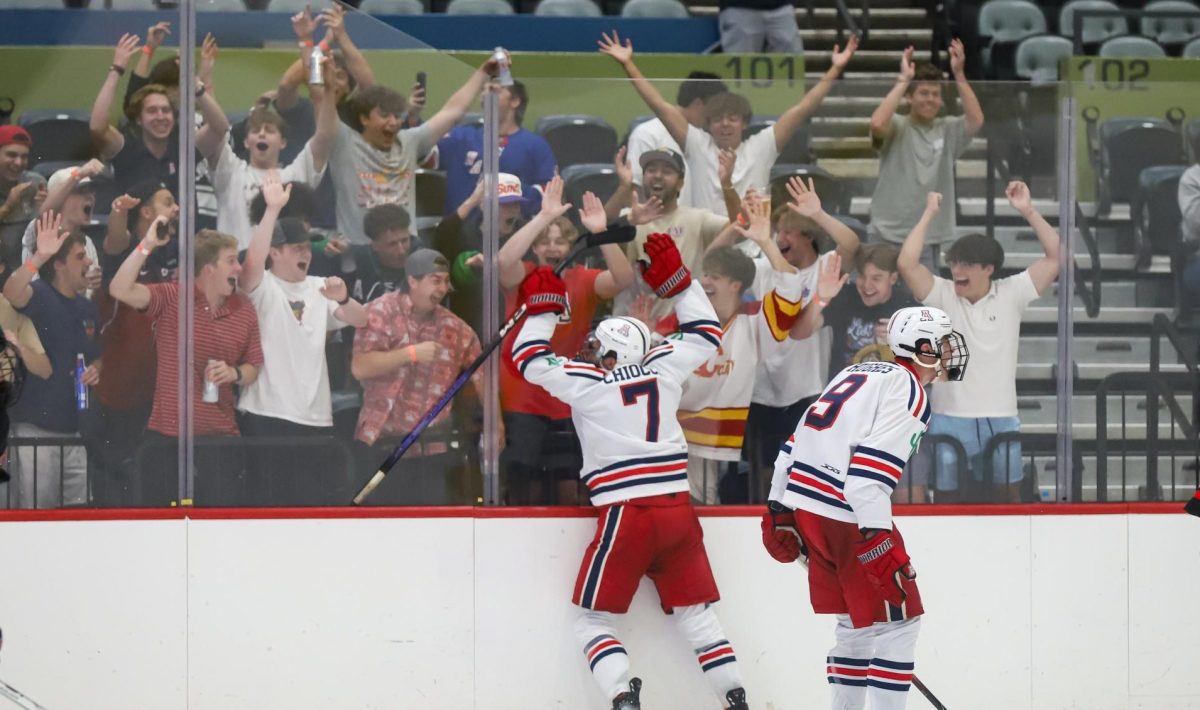Please have a plan, President Robert Shelton.
And don’t name it the “”Transformation.””
Don’t even mention “”transform”” because the athletic department needs no correlation to the path of the rest of the university.
Facing the same recession as everybody else, outgoing UA athletic director Jim Livengood accomplished what every businessman, legislator and president struggled to do in the past two years: Balance the budget and keep entities afloat.
Facing the botched succession of Lute Olson, Livengood managed to bring in the best possible candidate for the men’s basketball position after those other coaches “”rumored”” for the job have been tied to NCAA violations and cheating.
Facing the microscope of egotistical boosters and fair-weather fans, Livengood gave Mike Stoops enough of an opportunity to finish second in the Pac-10 this season.
They weren’t the easiest 16 years at the helm, but after all is said and done, Livengood departs Tucson on an upswing.
Sixteen years and Shelton will not renew the 64-year-old’s contact.
This better be a good plan.
“”Jim and I had a number of conversations starting last spring about a contract renewal,”” Shelton said Thursday, adding that there was not one reason why Livengood and the university decided to part ways — leaving us wondering if this change was just for the hell of it. “”We decided this was the time to make a break, this was a time to make a change.””
Livengood’s 16-year tenure has given UA fans polarized extremes throughout the last decade in UA sports — especially considering the prestigious condition the athletic department was left in the late 1990s. Football’s Desert Swarm in football and basketball’s heyday of Lute Olson made Tucson look like a modern-day Austin or Gainesville touting both top-5 powerhouse programs.
Then Livengood hired John Mackovic in 2001.
And gave Kevin O’Neill the house keys in 2007.
Ever since, fans have been quick to remember the stains on Livengood’s résumé, especially during the national search for UA’s long-term basketball coaching solution earlier this year.
“”The multitude of emails that I received in regards to, and I’m not trying to be facetious in this, my ancestry and where I might have come from is brutal,”” Livengood said in the press conference introducing Sean Miller.
But if these fans hold coaches and players to a what-have-you-done-for-me-lately approval rate, why not do the same for Livengood and his accomplishments in the past two years?
He balanced the budget better than university itself.
He balanced the budget better than the state itself.
He balanced the budget — must that need more explanation?
Sports aren’t recession-proof. Just in the past few years, the Arizona Diamondbacks laid off 31 of its front-office employees, the NBA cut nine percent of its domestic workforce and NASCAR could be on its final lap.
This summer ESPN.com ran an 11-part series outlining the economy’s harsh reality on college athletics. Since the economy sank in 2007, universities have covered expenses by dropping more than 227 varsity teams.
Conferences and schools cut from every flab possible — eliminating publication of media guides, reducing scholarship size to athletes and even asking coaches to take furlough days to compensate for a spiraling endowment and public donations.
Stanford started by cutting 21 staff positions and eliminated its fencing team to save $7 million over two years.
Washington cut its men’s and women’s swimming and diving teams to save $1.2 million.
ASU initially cut three sports to save $1.1 million.
UA athletics saved face in its self-sustained budget that the ignorant think comes from state funds.
“”The last thing we’re going to give up on in any way is trying to lose one of our 19 programs,”” Livengood told me in March, knowing he was just weeks away from emptying the checkbook for a basketball coach. “”That’s kind of the bottom line.””
Livengood treaded water financially while also raising massive funds to bring UA facilities on par with conference and national competitors.
The Richard Jefferson Gymnasium anchored the Campaign Arizona Phase II when it opened last December. Ex-Wildcat Jefferson donated $3.5 million to help fund the $14 million gym, giving Sean Miller a recruiting point in what has become a standard around college basketball programs.
Earlier this fall, the UA athletic department received its largest single donation — $10 million — put toward the $82 million football stadium expansion project — yet another recruiting point Stoops can build the future of his program around.
With plans to improve every sport, the UA will spend $378 million over the next 20 years.
A quick glance at those numbers without any context would leave you to think those are raw amounts the academic side is forced to cut.
“”When I heard about this vision coming to reality, for our program to grow, and all the other programs to grow … this is a necessity in modern-day collegiate sports,”” Stoops said the day the donation was announced.
These days, necessity isn’t always enough for people to give an f-word.
But somehow he managed in an era when the new f-word is “”funding.””
And Livengood managed to be livin’ good.
One of the most personable people in McKale’s front offices — always one to answer a phone call and shake your hand with a smile — leaves Tucson having coined the phrase: “”It’s a great day to be a Wildcat.””
Often times it was a better day to be a Wildcat than an actual student.
Tough times, but worth every penny.
— Bryan Roy can be reached at sports@wildcat.arizona.edu. Follow him at Twitter.com/BryanJRoy.








